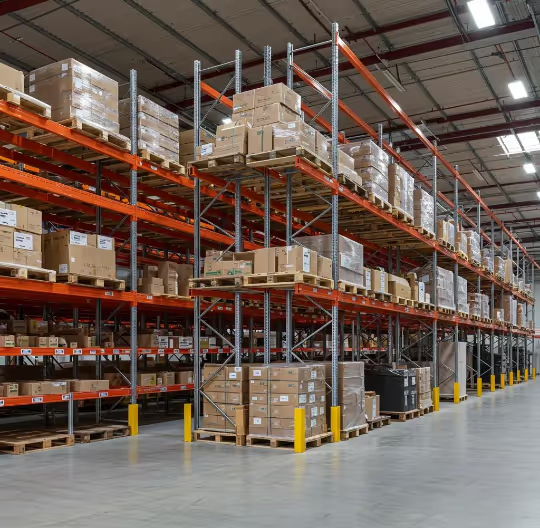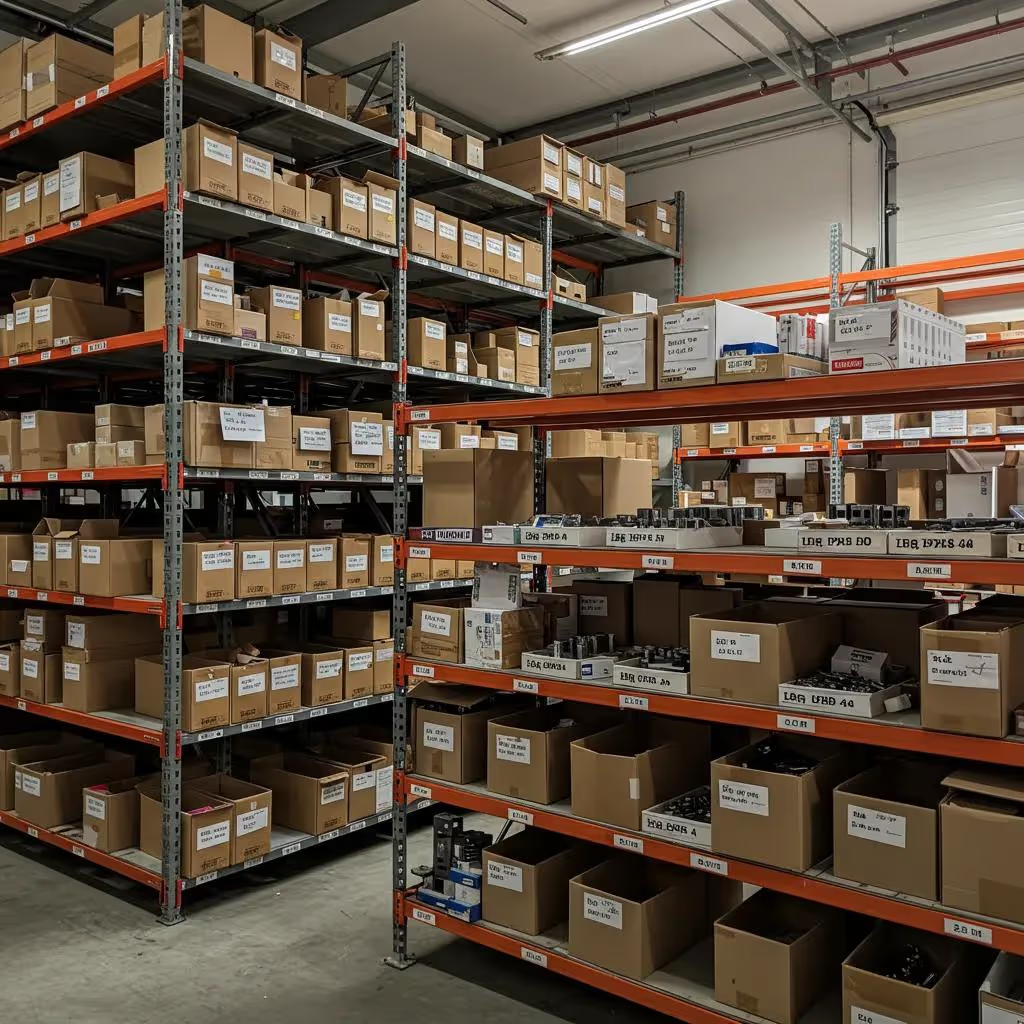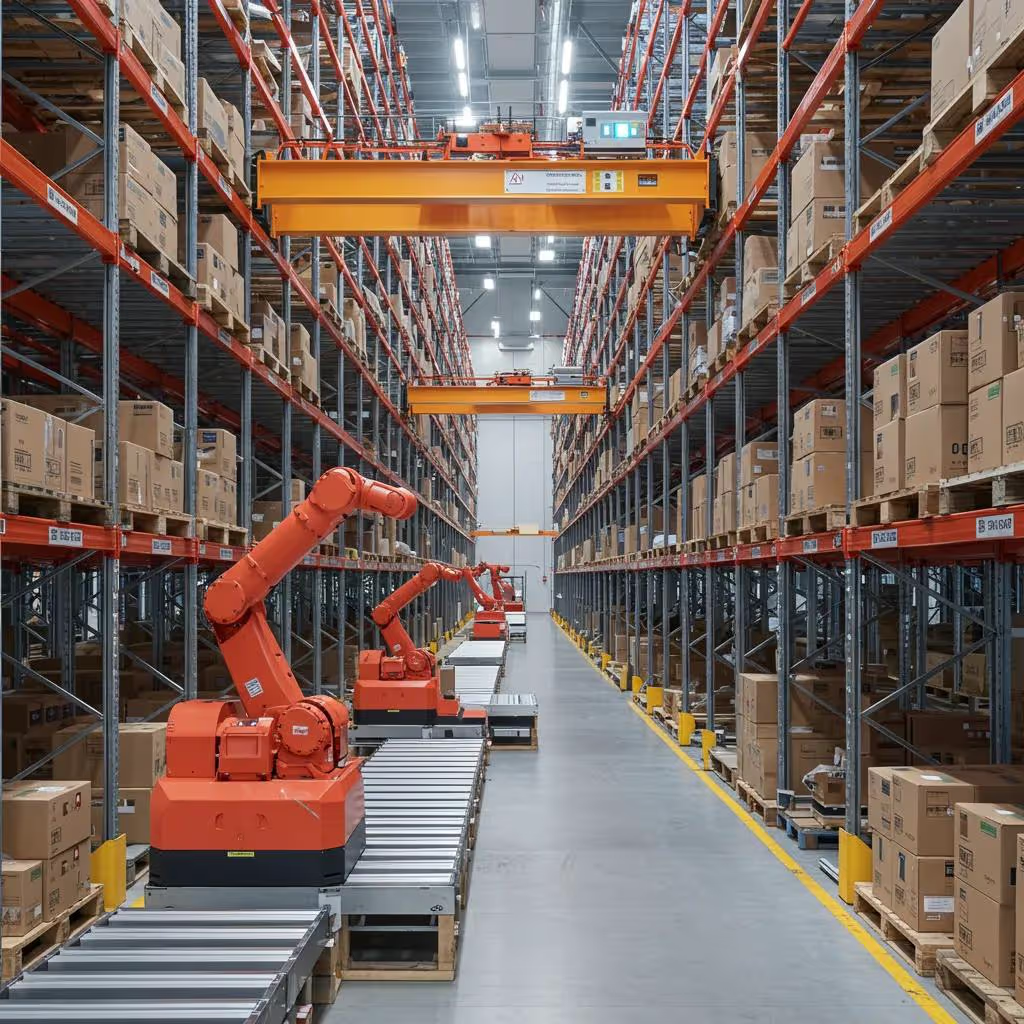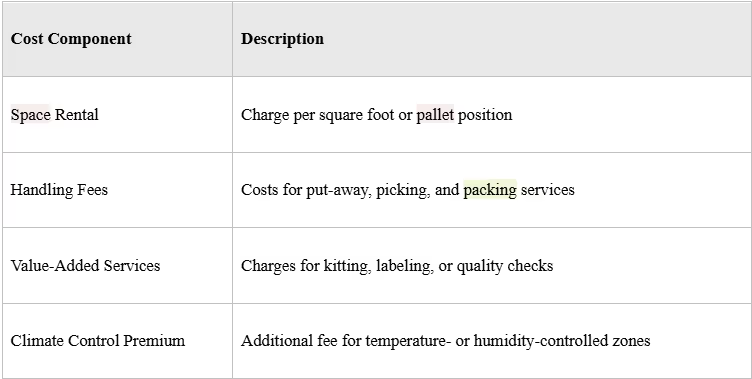
Warehouse storage organizes goods within a facility to maximise space utilisation, ensure product protection, and streamline inventory workflows. As a foundational logistics service, storage in a warehouse enables efficient supply chain operations, safe handling of materials, and cost-effective distribution. This guide explores the meaning and importance of warehouse storage, outlines the main storage systems, highlights key benefits, examines inventory management practices, details space-utilisation techniques, breaks down cost models, surveys emerging technologies, and illustrates how Skyteck Online delivers intelligent storage solutions.
What Does Warehouse Storage Mean and Why Is It Important?
Warehouse storage refers to the systematic placement and retention of goods in a facility designed for optimal access, protection, and inventory control. By combining shelving, racking, and automated systems, storage service providers transform raw space into a strategic asset.
How Is Warehouse Storage Defined in Logistics?
Warehouse storage in logistics denotes a service that holds products until they are needed for manufacturing, distribution, or sale. It integrates material handling equipment, defined storage zones, and inventory tracking to maintain accurate stock levels and minimise handling errors. This arrangement reduces lead times and supports just-in-time delivery models.
What Is the Difference Between Storage and Warehousing?
Storage is the act of holding goods safely, while warehousing covers storage plus value-added services such as inventory auditing, order fulfillment, and climate control. Warehousing services bundle storage, handling, cross-docking, and reporting into a unified logistics offering that ensures products move seamlessly through the supply chain.
Why Is Warehouse Storage Important for Supply Chain Efficiency?
Warehouse storage underpins supply chain efficiency by buffering demand fluctuations, enabling consolidated shipments, and reducing order cycle times. With organised storage systems, businesses improve picking speed, limit stockouts, and maintain product integrity are key factors in customer satisfaction and cost control.
What Are the Main Types of Warehouse Storage Systems?
Warehouse storage systems are engineered to suit diverse inventory profiles, building structures, and throughput requirements. Each system balances accessibility, density, and investment cost.
How Do Pallet Racking Systems Maximise Vertical Warehouse Space?
Pallet racking systems elevate storage density by stacking pallet loads across multiple levels. Selective racking, drive-in racking, and push-back racking each optimise aisle width and load accessibility:
- Selective Racking allows individual pallet retrieval with forklift access.
- Drive-In Racking maximises depth by enabling forklifts to enter rack lanes.
- Push-Back Racking uses nested carts to store multiple pallets on inclined rails.
These configurations increase cubic utilisation, reduce floor footprint, and adapt to varying load sizes. Maximising vertical space yields cost savings by lowering the required building area.
Optimising Warehouse Space Utilisation for Cost-Efficient Operations
In unit-load warehouses, products are stored and retrieved in pallet quantities. Examples include retail distribution centers (DCs), third-party logistics (3PL) DCs, and transshipment hubs within freight transportation networks. Space-related expenses constitute a significant portion of the operational costs for unit-load warehouses; consequently, maximising space utilisation is paramount. Furthermore, the ongoing evolution of e-commerce in the retail sector is reshaping the function and design of contemporary distribution centers (Boysen et al., 2018). A key trend with profound design implications is the increasing desire among many distributors to situate DCs within or proximate to metropolitan areas to facilitate same-day or expedited delivery services (Thuermer, 2018). Given the substantial cost of land in these regions, optimising the use of existing space is essential. The capacity to store a greater volume of products within the same physical footprint enhances inventory availability and, by extension, service levels. Conversely, the ability to accommodate the same inventory in a reduced footprint leads to cost reductions.Maximising space utilisation in unit-load warehouses., Unknown Author, 2019
What Are the Benefits of Shelving Solutions for Smaller Inventory?

Shelving systems, such as static wire shelves or mobile shelving carriages, offer accessible storage for small parts, cartons, and loose inventory. They support manual picking, faster restocking, and clear visibility of SKUs. By grouping products by turnover rate or category, shelving improves pick accuracy and reduces labor time in order processing.
How Do Automated Storage and Retrieval Systems (AS/RS) Improve Efficiency?

Automated Storage and Retrieval Systems (AS/RS) deploy robotic shuttles, cranes, or conveyors to move goods between storage lanes and picking stations. Integration with a Warehouse Management System ensures real-time inventory updates and dynamic slotting. AS/RS reduces human error, accelerates picking cycles, and enables high-density storage within a smaller footprint.
Automated Storage and Retrieval Systems for Optimised Warehouse Space Utilisation
The Automated Storage and Retrieval System (AS/RS) continues to facilitate efficient space management within the library. Furthermore, enhanced value has been recognised in areas such as materials security, inventory control, and customer service. The conceptualisation of the library as a dynamic space, coupled with advancements in services and operational efficiencies, has established the AS/RS as an integral element of current library operations and strategic future planning.Automated Storage & Retrieval System: From Storage to Service, Unknown Author, 2019
What Role Does Mezzanine Flooring Play in Warehouse Storage?
Mezzanine flooring creates an intermediate level inside a warehouse, effectively doubling usable area without expanding the building. These elevated platforms support shelving, light assembly work, or staging zones. Mezzanines enhance spatial flexibility, separate fast-moving goods from bulk storage, and optimise footprint utilisation.
How Does Block Stacking Work as a Storage Method?
Block stacking involves placing pallets directly on the floor in columns and rows without racking. It suits uniform, non-fragile products with predictable rotation patterns. While block stacking offers the lowest equipment cost, it requires strict FIFO/LIFO discipline and wide aisles for forklift maneuvering.
Warehouse Stacking Methodologies: An Analysis of Handling and Space Utilisation Costs
Comparative analysis of handling and space costs across diverse stacking methodologiesComparing handling and space costs for various types of stacking methods, KH Kim, 2010
What Are the Key Benefits of Optimised Warehouse Storage?
Optimised storage aligns facility layout, handling equipment, and inventory controls to boost performance across multiple metrics.
How Does Optimised Storage Boost Operational Efficiency and Productivity?
Optimised storage enhances operational efficiency by positioning high-turnover items near dispatch zones, reducing travel time for pickers. Clear labeling, slotting by velocity, and ergonomic workstations minimise handling steps and accelerate order fulfillment workflows. As a result, throughput improves and labor utilisation rates rise.
In What Ways Does Warehouse Storage Reduce Costs?
Warehouse storage reduces costs by:
- Lowering real estate expenses through high-density rack systems.
- Minimising product damage with protective barriers and controlled zones.
- Reducing labor hours via streamlined picking paths.
Effective space utilisation and damage prevention directly lower per-unit storage and handling expenses.
How Does Warehouse Storage Enhance Security and Product Safety?
Secured storage zones equipped with access controls, CCTV monitoring, and climate-controlled chambers protect valuables and perishable goods. Fire suppression systems, reinforced racking, and pallet immobilisers prevent loss from theft, fire, or structural collapse—ensuring product safety and compliance with industry standards.
Why Is Scalability and Flexibility Important in Warehouse Storage?
Scalable storage solutions adapt to seasonal inventory swings and business growth without large capital outlays. Modular racking, mobile shelving, and temporary mezzanines enable rapid reconfiguration. Flexibility ensures that storage capacity aligns with demand curves while preserving budget predictability.
How Can Warehouse Inventory Management Improve Storage Accuracy?
Warehouse inventory management applies processes and technologies to maintain precise stock levels, reduce discrepancies, and optimise space.
What Are Best Practices for Effective Warehouse Inventory Management?
Effective practices include regular cycle counting, ABC analysis to prioritise SKU audits, and enforcing FIFO or LIFO based on product perishability. Standardised bin labeling and barcode scanning reduce human errors. These measures sustain accurate records and support timely replenishment.
How Does a Warehouse Management System (WMS) Enhance Inventory Control?
A Warehouse Management System automates receipt, put-away, picking, and dispatch processes. It routes handlers to optimal storage locations, validates stock movements, and generates exception alerts for discrepancies. By providing real-time visibility, a WMS prevents stockouts, overstocking, and costly manual reconciliation.
What Are the Benefits of Real-Time Inventory Tracking?
Real-time tracking through RFID tags or barcode scanning updates counts instantly, enabling proactive replenishment and load balancing across storage zones. Instant visibility permits rapid decision-making, reduces backorders, and improves customer service levels by matching demand with available stock.
How Can You Maximise Warehouse Space Utilisation and Capacity?
Maximising capacity hinges on accurate measurement, smart layout, and continuous optimisation of vertical and horizontal space.
How Is Warehouse Capacity Calculated and Measured?
Warehouse capacity is measured in cubic feet or pallet positions by multiplying usable floor area by clear ceiling height. Effective capacity subtracts aisle widths and unusable zones. Tracking utilisation against these metrics reveals opportunities to add racking levels or reallocate space.
What Techniques Optimise Vertical and Horizontal Space?
Optimising space involves:
- Installing high-rise pallet racks that extend storage height.
- Narrowing aisle width with specialised narrow-aisle forklifts.
- Employing mobile shelving units that collapse when not in use.
- Implementing mezzanine floors for intermediate storage levels.
These techniques increase stock density while maintaining safe access.
What Are Ideal Warehouse Utilisation Rates for Efficiency?
Ideal utilisation rates range between 70 % and 85 % to balance storage density with movement space for workers and equipment. Exceeding 85 % may impede operations, while rates below 70 % indicate underused capacity and inflated real estate costs.
How Does Strategic Warehouse Layout Improve Storage Utilisation?
Strategic layout zones products by turnover rate, hazardous classification, or packaging size. High-velocity items are stored near shipping docks, while slower movers occupy upper rack levels. This zoning reduces travel distance and optimises aisle flow, boosting picking efficiency and storage density.
What Are the Typical Costs and Pricing Models for Warehouse Storage?
Warehouse storage pricing reflects space consumption, handling services, and facility features.
How Are Warehouse Storage Costs Calculated?
Storage costs are often calculated per square foot, per pallet (per “bay”), or per inventory unit. Components include:

Calculating total storage cost combines these components with average inventory levels.
What Factors Influence Warehouse Storage Pricing?
Location, facility age, security features, climate control, and accessibility all impact pricing. Urban warehouses command higher rents, while specialised services such as hazardous-materials handling attract service premiums.
How Do Fixed and Variable Costs Affect Warehouse Storage Budgets?
Fixed costs cover base rent, utilities, and insurance. Variable costs fluctuate with inventory volume and service usage, including labor charges and value-added service fees. Balancing fixed and variable cost components enables predictable budgeting and scalable cost structures.
What Are the Advanced Technologies Transforming Warehouse Storage?
Emerging technologies elevate storage operations through automation, data, and connectivity.
How Do Warehouse Management Systems (WMS) Improve Storage Operations?
A WMS orchestrates storage workflows by directing dynamic slotting, prioritising orders, and tracking inventory location. Through real-time analytics, WMS modules forecast demand, optimise labor allocation, and reduce carrying costs by minimising excess stock.
What Role Do Automation and Robotics Play in Modern Warehouses?
Automation and robotics handle repetitive tasks such as pallet movement, conveyor sorting, and order picking without downtime. Autonomous mobile robots (AMRs) and robotic arms increase throughput, lower labor costs, and improve safety by reducing manual lifting.
How Is IoT Used to Enhance Warehouse Storage Efficiency?
Internet of Things sensors monitor environmental conditions, track asset location via RFID gateways, and trigger alerts for equipment maintenance. IoT data streams feed analytics platforms that refine storage layouts and predict inventory surges.
What Are the Future Trends in Warehouse Storage Technology?
Future trends include AI-driven slotting algorithms, drone-based cycle counting, augmented reality picking guidance, and blockchain-enabled supply chain transparency. These innovations promise higher accuracy, lower labor dependency, and resilient storage networks.
How Does Skyteck Online Approach Intelligent Warehouse Storage Solutions?
Skyteck Online leverages integrated expertise, proprietary analytics, and modular designs to deliver tailored storage solutions that scale with customer needs.
What Unique Features Does Skyteck Online Offer in Warehouse Storage?
Skyteck Online’s platform provides real-time space utilisation dashboards, AI-powered slotting recommendations, and on-demand reconfiguration services. This combination of analytics and modular infrastructure supports dynamic inventory profiles and ensures continuous operational efficiency.
How Has Skyteck Online Helped Clients Optimise Their Warehouse Storage?
A multinational e-commerce client reduced unused space by 25 % after implementing Skyteck Online’s narrow-aisle racking and zone-based slotting. The solution improved picking speed by 30 % and cut labor costs through automated put-away guided by our Warehouse Management System module.
Why Choose Skyteck Online for Scalable and Secure Warehouse Storage?
Skyteck Online’s end-to-end service integrates design, installation, and ongoing optimisation under a single contract. Certified safety audits, 24/7 monitoring, and flexible lease options ensure security, compliance, and adaptable capacity for evolving business demands.
What Are the Most Frequently Asked Questions About Warehouse Storage?
Below are concise answers to common queries about warehouse storage.
What Is the Primary Purpose of Storage in a Warehouse?
The primary purpose of storage in a warehouse is to hold goods safely and systematically until they are required, ensuring inventory accuracy, product protection, and efficient distribution workflows.
What Are the Four Main Types of Warehouse Storage?
The four main types of warehouse storage are:
- Pallet Racking – Vertical stacking of pallet loads.
- Shelving – Accessible storage for small parts and cartons.
- Automated Storage and Retrieval Systems (AS/RS) – Robotic handling and dynamic slotting.
- Mezzanine Flooring – Elevated platforms to increase usable square footage.
How Does Warehouse Storage Differ from Warehousing?
Warehouse storage is the act of holding goods, while warehousing includes storage plus handling, inventory management, and distribution services as part of a comprehensive logistics offering.
What Are the Three Main Functions of a Warehouse?
A warehouse’s three main functions are storage of inventory, order fulfillment (including picking and packing), and value-added services such as labeling, kitting, or quality inspection.
Efficient warehouse storage transforms unused space into a strategic asset that drives supply chain resilience and cost control. By selecting the right systems from pallet racking to AS/RS and integrating real-time inventory management, businesses ensure scalable, secure, and productive operations. Skyteck Online’s intelligent storage solutions combine cutting-edge technology, modular design, and expert consulting to optimise your warehouse for peak performance and future growth. For tailored guidance on maximising your warehouse storage potential, connect with Skyteck Online today.


.svg)






